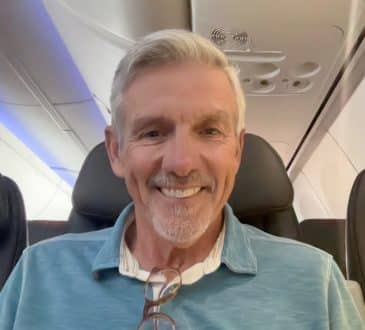Thought leadership is a deliberate outcome

Have you ever wondered why many perfectly competent, intelligent and accomplished corporate leaders seem destined to toil almost in anonymity, while others seem to have a knack for attracting the spotlight and are widely engaged as thought leaders in their fields and their communities?
The difference most often is a matter of intentionality and process, not just competence or intelligence, according to Pete Weissman, founder and president of Thought Leader Communications, a boutique executive strategic communications firm based in Atlanta.
“Specifically, we help executives and organizations become recognized as thought leaders in their industry, so they can accomplish their goals,” Weissman says.
Weissman is an award-winning speechwriter, speaker and communications director with nearly 20 years of experience supporting leaders in the White House, the U.S. Senate and Fortune 100 companies.
The Covid-19 pandemic has changed the realms of communications in many ways, creating new expectations for speakers capable of reaching audiences with dynamic charisma in the webinar medium.
Still, for many executives, speech invitations are accepted without a strategy, Weissman says.
“Too often, speech preparation is left for the last minute, and messages are not tailored to specific audiences,” he says.
Weissman cites five best practices for effective executive communications:
- Be strategic. “A CEO has limited time to prepare and deliver speeches. Therefore, every speech should advance the company’s objectives and reach the right audience with the right message,” Weissman says. “Sometimes, when my partners and I are called on to prepare a speech, no one in the company knows why the CEO is speaking to this audience or how this speech drives the company’s objectives. By taking a strategic approach, we eliminate those ‘one-offs’ and make the best use of the CEO’s time.”
- Be consistent. “For audiences to understand and believe a message, it must be repeated consistently. Often, we create a ‘stump speech,’ so the CEO always has a solid, familiar message ready to deliver,” Weissman says.
- Be proactive. “Seek out strategic audiences. Effective leaders do not just choose from the speaking invitations they receive. Instead, they seek out the audiences and venues that meet their strategic objectives,” Weissman says.
- Leverage the opportunity. “Too often, executive speeches only reach the people sitting in the immediate audience. We look for ways to reach additional audiences, such as having the speech reprinted, repurposed into a column or featured online,” Weissman says. One bonus technique that Weissman often recommends is maximizing the impact of announcements (such as new partnerships, investments, or expansions), so they can be announced by the CEO in a speech. “Often, an announcement made in person by a CEO can generate more news coverage than an announcement made via press release,” Weissman says.
- Be a thought leader. “An effective executive communication program does more than just deliver messages. It helps elevate leaders to the next level of visibility, vision and respect,” Weissman says. “It ensures that executives are bringing new and engaging ideas to the right audiences. It changes the way people think about an organization. Finally, it reshapes the landscape, so a company can achieve its goals. This is the most challenging best practice to put in place.”
C-Level Biobox
Name: Pete Weissman
Title: President
Organization: Thought Leader Communications in Atlanta
Website: https://www.thoughtleadercommunications.com
Expertise: Communications advisor to global CEOs
Education: Bachelor’s degree in communications from Washington & Lee University in Lexington, Va.
Family: Wife, Emily; son, Ryan; daughter, Hannah; and labradoodle, Toodles.
Best advice ever received: “I worked for Neville Isdell when he was chairman and CEO of The Coca-Cola Company. He told me, ‘Pete, a job is as big – or as small – as you make it.’”
Favorite musical artist: Bob Seger
Written by Steve Jagler.
Add CEOWORLD magazine to your Google News feed.
Follow CEOWORLD magazine headlines on: Google News, LinkedIn, Twitter, and Facebook.
Copyright 2024 The CEOWORLD magazine. All rights reserved. This material (and any extract from it) must not be copied, redistributed or placed on any website, without CEOWORLD magazine' prior written consent. For media queries, please contact: info@ceoworld.biz








